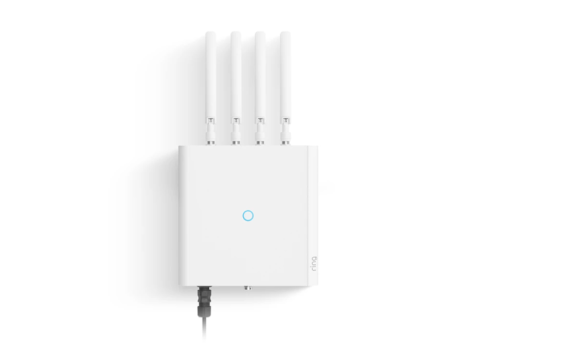I could not be more excited, y’all! Thanks to Amazon announcing its plans to build out its Sidewalk network with professionally installed equipment that can deliver signals for up to five miles, and more partnerships from LoRaWAN network company Senet, we are set to have two competing nationwide Low-Power Wide-Area Networks (LPWANs) for the IoT.
I had thought this showdown was going to be the biggest story of 2021 (Matter was my other big story for 2021, so I’m 0 for 2 here). Instead, we’ll see coverage expand and devices that use each network launch in 2022. So if you’re a developer, which network should you choose?
First, let’s tackle some basic information. LPWANs provide coverage for connected devices that don’t need to send a lot of data. These networks need to be relatively inexpensive because no one wants to put an expensive radio or pay exorbitant data costs to send data from a smoke detector or security sensor. Ideally, they can provide coverage for fixed or mobile assets, and they need to conserve power because many of the devices that use the network will run on batteries.
With these capabilities, the right LPWAN could open up an entirely new category of connected devices, from dog collars that track your pet without requiring a subscription to remote sensors for oil pipelines. Even in the home or factory, having a LoRaWAN or Sidewalk network could help when the power or internet goes out by keeping critical devices online. The cellular world has already recognized the value of LPWANs, which is why it’s pushing the NB-IoT standard that’s in use today. But NB-IoT is still expensive compared with LoRaWAN and Amazon’s proposed network, which is why there is such an opportunity for LPWANs.
Continue reading: https://staceyoniot.com/are-you-ready-for-an-iot-network-showdown/
I had thought this showdown was going to be the biggest story of 2021 (Matter was my other big story for 2021, so I’m 0 for 2 here). Instead, we’ll see coverage expand and devices that use each network launch in 2022. So if you’re a developer, which network should you choose?
First, let’s tackle some basic information. LPWANs provide coverage for connected devices that don’t need to send a lot of data. These networks need to be relatively inexpensive because no one wants to put an expensive radio or pay exorbitant data costs to send data from a smoke detector or security sensor. Ideally, they can provide coverage for fixed or mobile assets, and they need to conserve power because many of the devices that use the network will run on batteries.
With these capabilities, the right LPWAN could open up an entirely new category of connected devices, from dog collars that track your pet without requiring a subscription to remote sensors for oil pipelines. Even in the home or factory, having a LoRaWAN or Sidewalk network could help when the power or internet goes out by keeping critical devices online. The cellular world has already recognized the value of LPWANs, which is why it’s pushing the NB-IoT standard that’s in use today. But NB-IoT is still expensive compared with LoRaWAN and Amazon’s proposed network, which is why there is such an opportunity for LPWANs.
Continue reading: https://staceyoniot.com/are-you-ready-for-an-iot-network-showdown/

